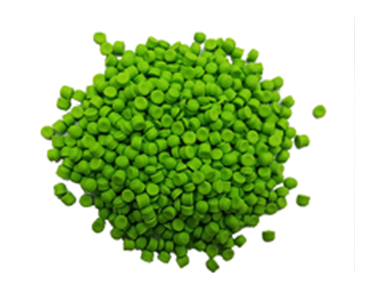Industry news
Controllable nanostructured polymer and its composite thermoelectric materials
Release time:2019-04-02 09:18:00
Author:admin
Clicks:
Source: Frontier of Polymer Science|
Recently, Professor Chen Guangming of Shenzhen University and Associate Professor Wang Xin of Qingdao University of science and technology published a review article in the Journal of Materials Chemistry A, a journal of the Royal Society of chemistry, summarizing the research progress in regulating and improving the thermoelectric properties of polymers and their composites through the controllable construction of nanostructures, and looking forward to the development prospects of this field.
Thermoelectric functional materials can realize direct mutual conversion between thermal energy and electrical energy. It has wide potential application prospects in the recovery and effective utilization of waste heat and low-quality heat, local cooling, sensing and wearable electronic devices. For example, it provides energy for the Voyager space probe launched by NASA and has been operating in space for more than 40 years.
 "
"
▲ Voyager space probe
The research on thermoelectric materials has a history of nearly 200 years, but mainly focuses on the field of inorganic thermoelectric materials. In recent years, especially in the past five years, organic thermoelectric materials have attracted great interest because of their low thermal conductivity, light weight, easy solution processing, highly adjustable and controllable molecular structure and high flexibility. The number of relevant papers published has increased sharply, and some important breakthroughs and representative reviews have emerged. They have developed into one of the important frontier topics in the field of materials.
Organic polymer thermoelectric materials (mainly conjugated polymers) and their composite thermoelectric materials are important components of organic thermoelectric materials, and have made important progress in recent years. For example, a series of material preparation methods including template adsorption in situ polymerization, layer to layer assembly and controllable construction of nanostructures have been developed, and a variety of high-performance p-type and n-type flexible films with excellent thermoelectric properties have been obtained, Improved the measurement methods and technologies of thermoelectric parameters such as in-plane thermal conductivity of thin films, proposed the assembly and preparation processes of various thin films and fiber devices, and deepened the understanding of the preparation principle and structure thermoelectric property relationship mechanism of polymers and their composite thermoelectric materials.
This review aims to summarize the research progress in controlling and improving the thermoelectric properties of polymers and their composites through the controllable construction of nanostructures. Firstly, the author briefly introduces the research background of thermoelectric materials, including inorganic and organic thermoelectric materials. Then, the discussion is divided into two parts: polymer nanostructured materials and polymer composite nanostructured materials: taking two typical conjugated polymers PEDOT and PPy nanostructures as examples, the high dependence of thermoelectric properties on polymer nanostructures and the further regulation of thermoelectric properties through post-processing are emphatically introduced; The research progress of nanostructured composite thermoelectric materials is summarized from the perspectives of three-dimensional network structure of carbon nanoparticles coated by polymer nanostructures, layered morphology of polymer nanostructures / inorganic lamellar composites, unique "Coral" nanostructures and polymer nanostructures / polymer composites. Finally, it is pointed out that the controllable construction of nanostructures is an effective strategy to obtain high-performance polymers and their composite thermoelectric materials, and some suggestions for the future research directions in this field are put forward.
Recently, Professor Chen Guangming of Shenzhen University and Associate Professor Wang Xin of Qingdao University of science and technology published a review article in the Journal of Materials Chemistry A, a journal of the Royal Society of chemistry, summarizing the research progress in regulating and improving the thermoelectric properties of polymers and their composites through the controllable construction of nanostructures, and looking forward to the development prospects of this field.
Thermoelectric functional materials can realize direct mutual conversion between thermal energy and electrical energy. It has wide potential application prospects in the recovery and effective utilization of waste heat and low-quality heat, local cooling, sensing and wearable electronic devices. For example, it provides energy for the Voyager space probe launched by NASA and has been operating in space for more than 40 years.
 "
"▲ Voyager space probe
The research on thermoelectric materials has a history of nearly 200 years, but mainly focuses on the field of inorganic thermoelectric materials. In recent years, especially in the past five years, organic thermoelectric materials have attracted great interest because of their low thermal conductivity, light weight, easy solution processing, highly adjustable and controllable molecular structure and high flexibility. The number of relevant papers published has increased sharply, and some important breakthroughs and representative reviews have emerged. They have developed into one of the important frontier topics in the field of materials.
Organic polymer thermoelectric materials (mainly conjugated polymers) and their composite thermoelectric materials are important components of organic thermoelectric materials, and have made important progress in recent years. For example, a series of material preparation methods including template adsorption in situ polymerization, layer to layer assembly and controllable construction of nanostructures have been developed, and a variety of high-performance p-type and n-type flexible films with excellent thermoelectric properties have been obtained, Improved the measurement methods and technologies of thermoelectric parameters such as in-plane thermal conductivity of thin films, proposed the assembly and preparation processes of various thin films and fiber devices, and deepened the understanding of the preparation principle and structure thermoelectric property relationship mechanism of polymers and their composite thermoelectric materials.
This review aims to summarize the research progress in controlling and improving the thermoelectric properties of polymers and their composites through the controllable construction of nanostructures. Firstly, the author briefly introduces the research background of thermoelectric materials, including inorganic and organic thermoelectric materials. Then, the discussion is divided into two parts: polymer nanostructured materials and polymer composite nanostructured materials: taking two typical conjugated polymers PEDOT and PPy nanostructures as examples, the high dependence of thermoelectric properties on polymer nanostructures and the further regulation of thermoelectric properties through post-processing are emphatically introduced; The research progress of nanostructured composite thermoelectric materials is summarized from the perspectives of three-dimensional network structure of carbon nanoparticles coated by polymer nanostructures, layered morphology of polymer nanostructures / inorganic lamellar composites, unique "Coral" nanostructures and polymer nanostructures / polymer composites. Finally, it is pointed out that the controllable construction of nanostructures is an effective strategy to obtain high-performance polymers and their composite thermoelectric materials, and some suggestions for the future research directions in this field are put forward.









